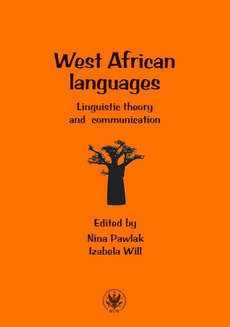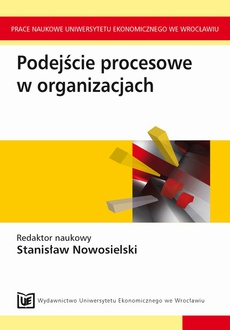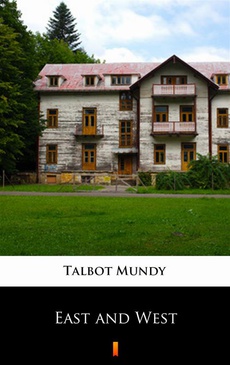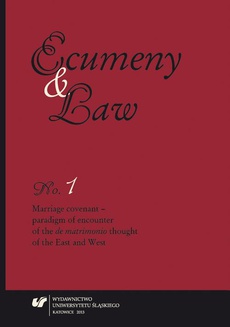POLECAMY
West African languages
Linguistic theory and communication
Redakcja:
Wydawca:
Format:
ibuk
Monografia dotyczy najważniejszych cech typologicznych języków Afryki Zachodniej i wspólnoty komunikacyjnej, uzasadniającej nazwanie tego regionu Afryki obszarem konwergencji i wspólnych cech arealnych. Autorzy łączą różne sposoby badania oraz tradycje opisu języków, dotychczas skupiające się na ujęciach synchronicznych i diachronicznych w obrębie rodzin językowych. Rozwijają tezę o obszarze konwergencji językowej Afryki Zachodniej, stanowiącą ważne zagadnienie w ramach lingwistyki arealnej i aktualny temat badawczy afrykanistyki. Złożoność i dynamikę językową Afryki Zachodniej ukazują przez pryzmat różnorodnych typów języka obejmujących pidżyny i języki migowe.
Publikacja jest wynikiem międzynarodowej konferencji 3rd Symposium on West African languages, która odbyła się w dniach 26-29 września 2018 roku w Warszawie. Adresowana jest przede wszystkim do językoznawców zajmujących się typologią języków, komunikacją językową, lingwistyką kulturową, socjolingwistyką w wymiarze zarówno wewnątrzsystemowym, jak i porównawczym, pokazującym odrębności strukturalne między językami i wzajemne relacje między językami pozostającymi w kontakcie.
Autorami monografii są specjaliści zajmujący się językami Afryki Zachodniej z ośrodków europejskich (Paryż, Neapol, Oslo, Brighton, Frankfurt n/Menem, Moskwa) i uniwersytetów nigeryjskich (Kano, Calabar, Benin, Ibadan) oraz językoznawcy z warszawskiego ośrodka afrykanistycznego.
The monograph covers the main aspects of studies on West African languages related to the diversity of structural patterns and complexity of their linguistic assignment. It includes various topics ranging from linguistic description and conceptualization patterns to the sociolinguistics of contemporary refugee camps. Typological diversity is enriched with the presentation of pidgin structures and sign languages. Structural differences between languages are seen from a comparative perspective, which also indicates the areal dimension of linguistic processes. The presentations of linguists from both Europe and Africa develop the idea of convergence area in West Africa, which is motivated by the contact between languages of different affiliations to language families and common cultural basis of language development.
| Rok wydania | 2020 |
|---|---|
| Liczba stron | 300 |
| Kategoria | Publikacje darmowe |
| Wydawca | Uniwersytet Warszawski |
| ISBN-13 | 978-83-235-4631-3 |
| Numer wydania | 1 |
| Informacja o sprzedawcy | ePWN sp. z o.o. |
Ciekawe propozycje
West Farragut Avenue
do koszyka
West of the Pecos
do koszyka
East and West
do koszyka
Far West - poradnik do gry
do koszyka
Heart of the West
do koszyka
Spis treści
| General abbreviations and symbols | 7 |
| Standard glossing labels | 7 |
| Introduction Nina Pawlak, Izabela Will | 9 |
| PART I. WEST AFRICA AS A LINGUISTIC AREA | |
| Measuring phonological complexity in West African languages Gian Claudio Batic | 23 |
| Innovative features of nouns and pronouns in Chadic languages of the Nigerian Gongola-Benue basin Sergio Baldi, Rudolf Leger | 46 |
| Methodological and technical challenges of a corpus-based study of Naija Bernard Caron | 57 |
| PART II. STRUCTURAL PROPERTIES OF LANGUAGES AND THEIR THEORETICAL FRAMES | |
| Clause chaining in Bambara Valentin Vydrin | 79 |
| Categorization of phasal polarity items in Bambara (Mande) Klaudia Dombrovsky-Hahn | 99 |
| Ma-causatives in Tomo Kan Dogon: between causatives and passives Vadim Dyachkov | 127 |
| Asymmetries in negation in the Atlantic languages: a preliminary comparison Aurore Montébran | 140 |
| Let’s tidy up the grammar of Hausa and analyse after/behind in after class/after he arrives/he’s behind etc. as prepositions Philip J. Jaggar | 153 |
| Enhancing grammar and valence resources for Akan and Ga Dorothee Beermann, Lars Hellan | 166 |
| PART III. SYNTACTIC STRUCTURES AND CONCEPTUALIZATION PATTERNS | |
| On the shi- evaluative prefi x in Lamnsoꞌ Lendzemo Constantine Yuka | 189 |
| Tiv compounds and compouding Vanessa Chivir Adzer | 198 |
| Nigerian Pidgin English phraseology in the context of areal infl uences Olga Frąckiewicz | 213 |
| Lexical iconicity in Adamorobe Sign Language (AdaSL) and Ghanaian Sign Language (GSL) Mary Edward | 230 |
| PART IV. SOCIAL AND COMMUNICATIVE ASPECTS OF LANGUAGES | |
| Phraseological units involving body-part terms: a corpus based analysis of Hausa to English translation Yakubu Magaji Azare | 255 |
| Linguistic repertoires of refugees in Internally Displaced Peoples’ (IDP) camps in North East Nigeria Judith A. Mgbemena | 266 |
| The function of nonverbal regulators in Hausa face-to-face interaction Aisha Umar Adamu | 279 |
| “Allah expressions” as a manifestation of common cultural area in West Africa Nina Pawlak | 288 |

























